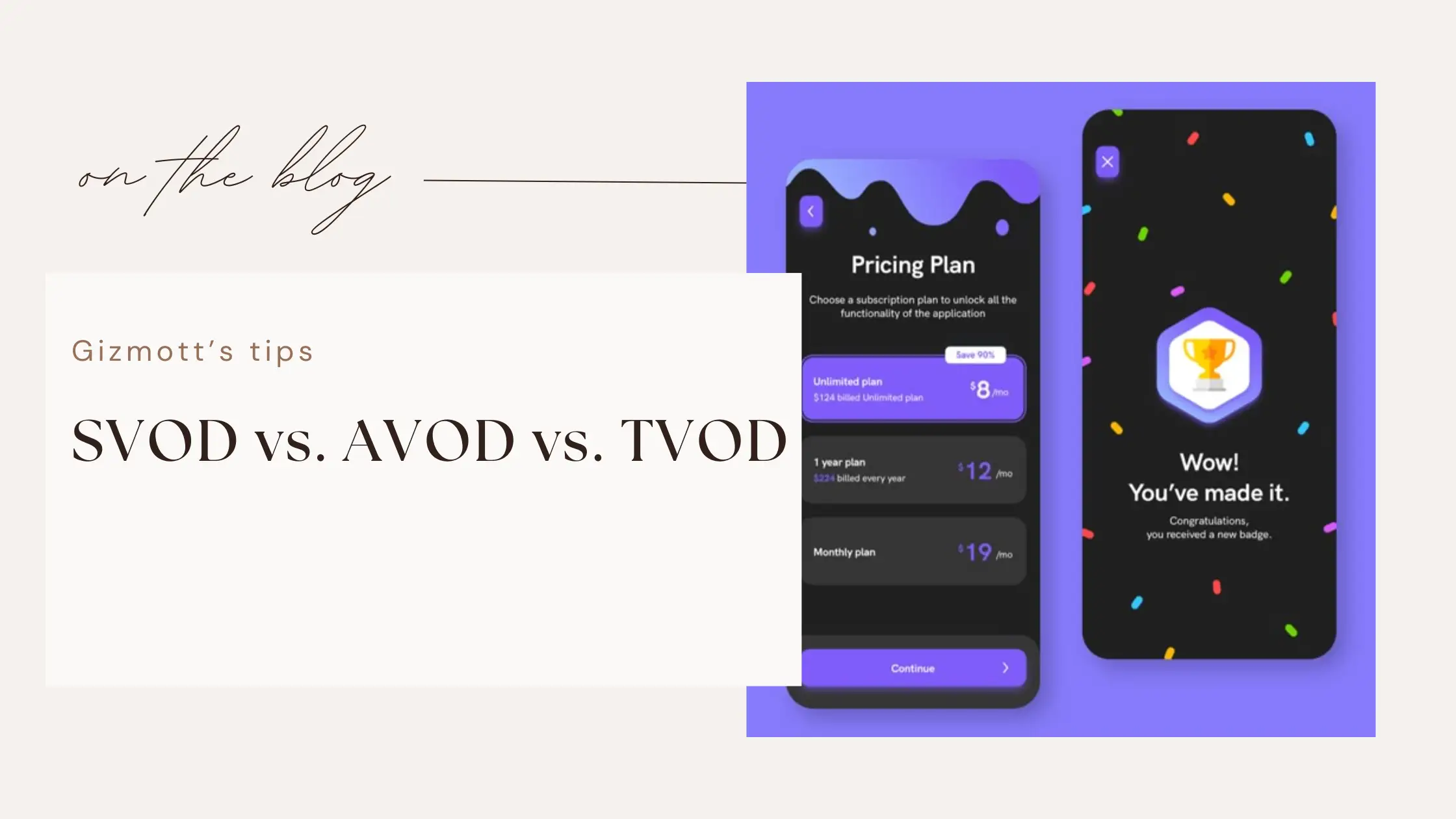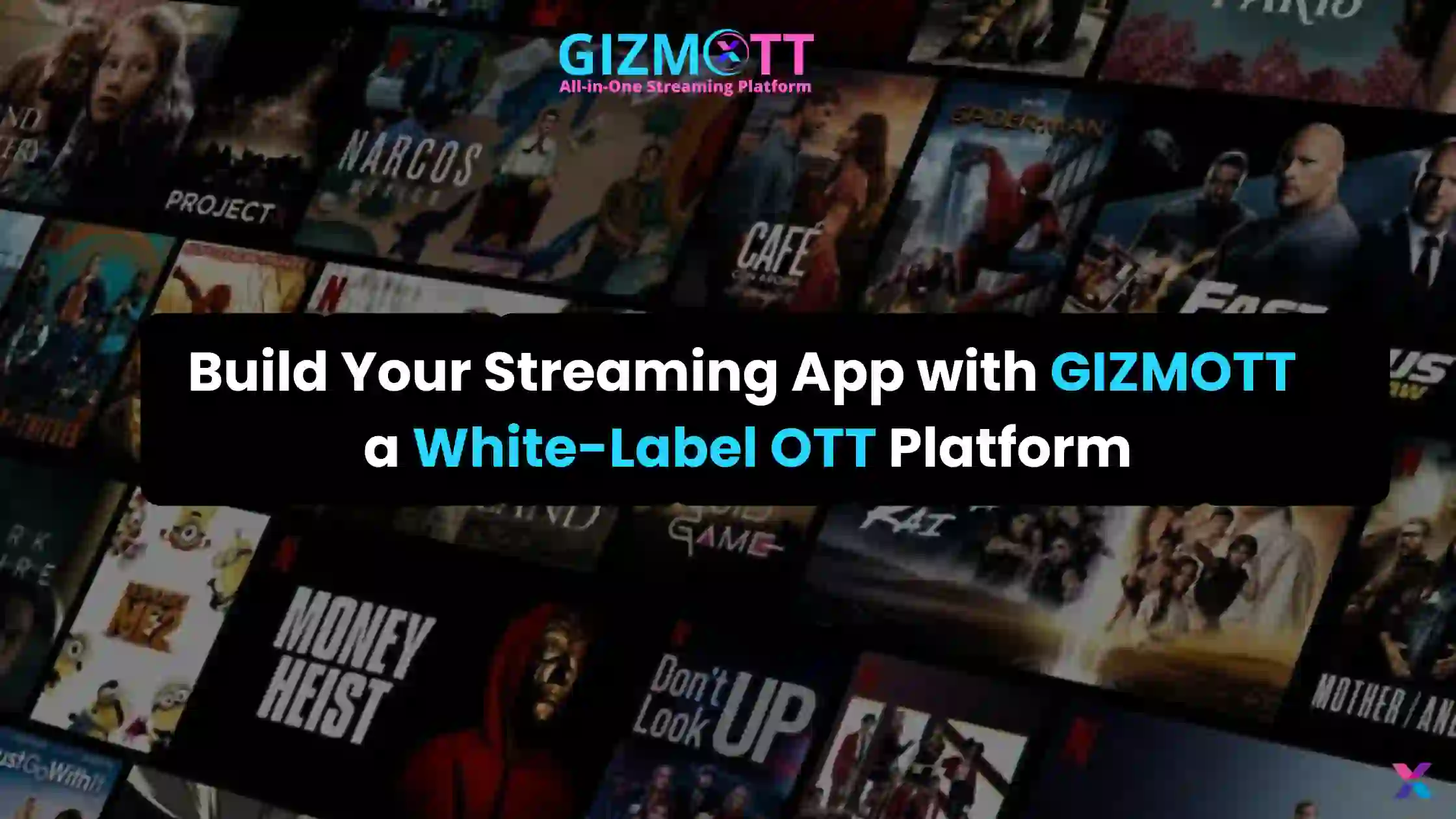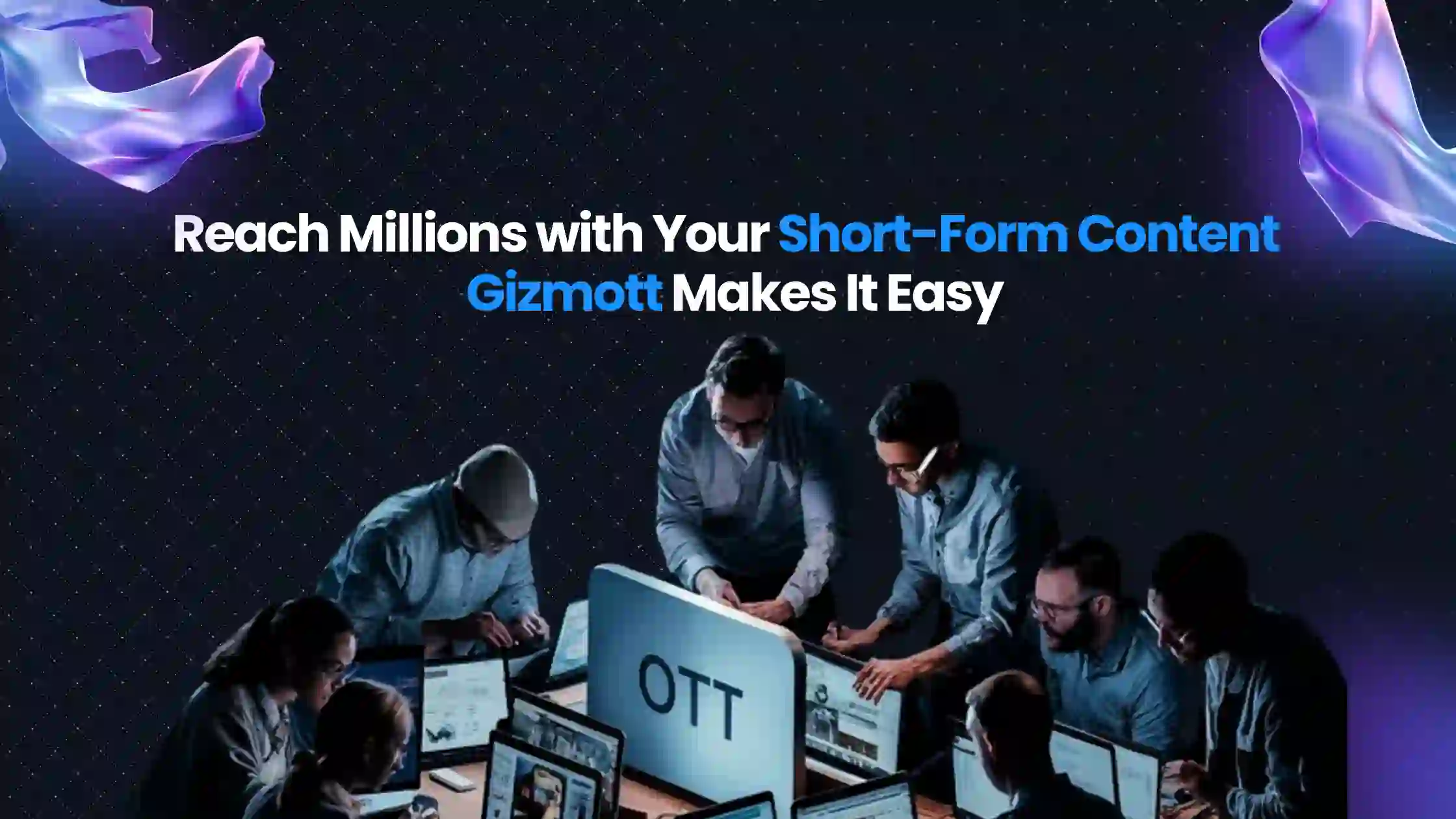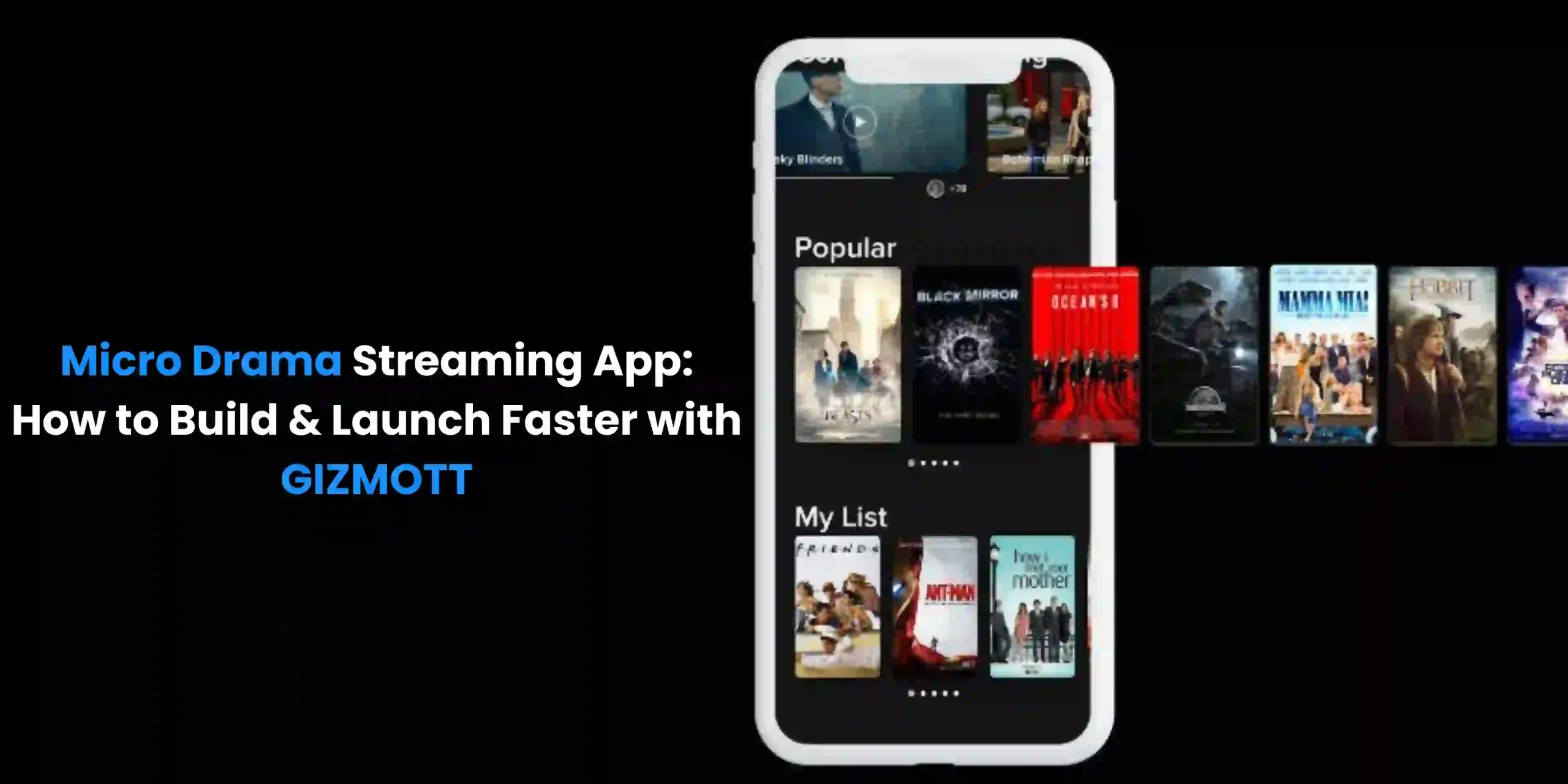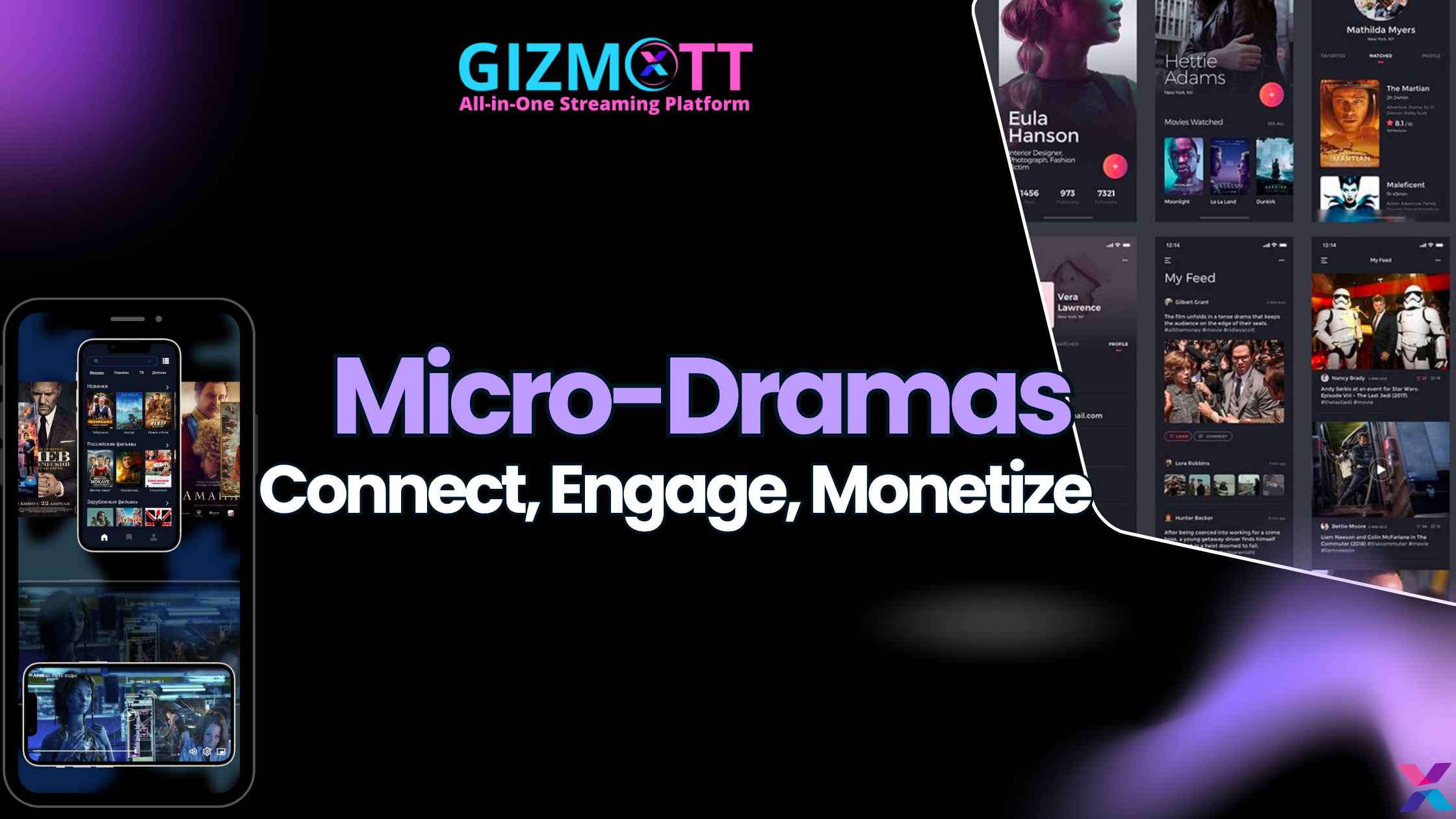SVOD vs. AVOD vs. TVOD: Which OTT Model is Right for You?
In the rapidly expanding world of OTT (Over-The-Top) streaming services, the monetization model you choose can make or break your business. Whether you’re building a new streaming platform or optimizing an existing one, understanding the different OTT revenue models is crucial. Do you want a steady stream of income? Or do you prefer to provide free access in exchange for ads? How do services like Netflix, Hulu, and Disney+ make their money, and which model should you follow?
Let’s dive into the three primary OTT monetization models: Subscription Video on Demand (SVOD), Ad-Supported Video on Demand (AVOD), and Transactional Video on Demand (TVOD). Together, we’ll explore which model is the best fit for your platform, using real-life examples to guide our understanding of SVOD vs. TVOD and the debate between subscription vs. ad-supported OTT. And for those looking to take their OTT business to the next level, Gizmott offers an all-in-one OTT platform service that can help you seamlessly implement and optimize these models.
SVOD: Steady Revenue Through Subscriptions—But Is It Enough?
Imagine you’re a content creator with an amazing catalog of movies, TV shows, and exclusive content. You’re offering all this value in exchange for a monthly or yearly subscription fee. Sounds promising, right? This is the model of choice for platforms like Netflix and Disney+.
Example: Netflix’s Success Story
Netflix took the world by storm by offering SVOD. Their customers pay a monthly subscription, and in return, they get to stream an ever-growing library of content. But the question is: Is this model sustainable? With fierce competition and a rising demand for fresh content, Netflix has continually invested in original series and films to keep users hooked.
Why SVOD?
The beauty of SVOD lies in its simplicity. You set a fixed price, offer tons of content, and watch your revenue flow steadily in month after month. This makes it a great model if your goal is long-term growth. The key to success? Providing exclusive, binge-worthy content that makes subscribers feel like they can’t live without your service.
Challenges with SVOD:
But here’s the catch: Even with all the success, retaining subscribers is never easy. As we saw in 2022, Netflix faced its first-ever decline in subscriptions. Why? Because competition from services like Disney+ and Amazon Prime Video intensified. And while SVOD may seem like a safe bet, your success relies heavily on customer loyalty. Drop the ball on content, and subscribers will churn.
Gizmott’s Role in SVOD:
For platforms using SVOD, Gizmott’s OTT platform solutions can help streamline subscription management and payment systems. Gizmott offers secure, customizable, and scalable solutions that can support seamless integration with SVOD models. From subscription billing to managing recurring revenue streams, Gizmott ensures that your platform runs smoothly and remains responsive to subscriber needs.
AVOD: Free Content, But With a Twist—Are Ads the Answer?
Now, let’s imagine you’ve got a platform that doesn’t want to force users to pay upfront. What if you could reach a broader audience by offering free content, but with one catch: ads? This is where AVOD (Ad-Supported Video on Demand) comes in, and services like Hulu have found success with this model.
Example: Hulu’s Ad-Supported Success
Hulu offers both a paid subscription and a free, ad-supported option. The free version, which uses ads to generate revenue, has attracted millions of users. But here’s the kicker: It’s not just about the ads; it’s about targeting them effectively. Hulu uses user data to show ads that are relevant, making the whole experience less intrusive and more profitable.
Why AVOD?
If your goal is to maximize reach and grow your user base quickly, AVOD could be the perfect fit. It allows users to watch content for free—without any upfront commitment. This is a compelling proposition for audiences who are reluctant to pay for streaming services. And the best part? The more users you get, the more advertisers will want to pay for spots, making it a potentially lucrative model.
Challenges with AVOD:
But here’s the truth: Ads can be annoying. They interrupt the viewer experience, and if you don’t target them properly, they can lead to frustration. Plus, unlike SVOD, the revenue is not as predictable. You need a large and consistent user base to make AVOD work, and that’s no small feat. You also risk losing users to ad blockers, further complicating things.
Gizmott’s AVOD Solutions:
Gizmott’s OTT platform provides advanced ad management tools that allow for intelligent, data-driven ad placements. By integrating AVOD, Gizmott helps businesses create more personalized ad experiences for users, enhancing engagement while boosting ad revenue. The platform also supports multi-platform streaming, ensuring your AVOD service reaches your audience wherever they are.
TVOD: Pay-Per-View Content—Is It Worth the Hassle?
Here’s an interesting twist: Instead of offering a subscription or running ads, what if users paid for the specific content they wanted to watch—either through rentals or direct purchases? This is the TVOD model. Unlike the other two, it doesn’t rely on subscriptions or ads. Instead, you monetize based on individual content transactions.
Example: Disney+ and TVOD in Action
Disney+ primarily uses SVOD, but they also incorporate TVOD for specific content releases. Remember when Disney launched Mulan directly on Disney+ with a premium purchase option? That was a hybrid approach that blended subscription with transactional revenue. It worked because Disney knew people were eager to watch these high-demand movies but didn’t want to wait for them to become available to all subscribers.
Why TVOD?
TVOD works best for premium, high-demand content. Think about those big blockbuster releases or limited-time shows. If you have something special and exclusive, you can use TVOD to monetize that content directly. You get the revenue immediately, which can be a boon for content creators looking to capitalize on one-time events or releases.
Challenges with TVOD:
However, the key downside to TVOD is unpredictability. You don’t know how many users will be interested in buying or renting your content. Sure, the pricing is flexible, but it’s hard to maintain steady cash flow when you’re dependent on individual transactions. Plus, users may be hesitant to purchase content when they can subscribe to platforms like Netflix for unlimited access.
Gizmott’s TVOD Support:
Gizmott, you trusted OTT platform service provider offers TVOD solutions that integrate flexible pay-per-view models into your platform. With features like secure payment gateways, detailed analytics, and seamless content management, Gizmott helps you maximize monetization for high-demand content releases. Whether you’re renting or selling, their platform ensures smooth transactions and provides valuable insights to fine-tune your business strategies.
Which OTT Model is Right for You?
The big question is: Which model should you choose for your OTT service?
Hybrid Monetization!
While SVOD, AVOD, and TVOD each offer distinct benefits, Gizmott’s Hybrid Monetization model combines the best aspects of these strategies to maximize revenue and audience engagement.
Why Choose Hybrid Monetization?
Hybrid monetization allows OTT service providers to tailor their offerings to different viewer segments, ensuring flexibility, revenue diversification, and improved customer retention.
Advantages of Gizmott’s Hybrid Monetization Model
✅ Multiple Revenue Streams – By integrating SVOD, AVOD, and TVOD, Gizmott enables content owners to earn through subscriptions, ads, and one-time purchases, reducing dependency on a single model.
✅ Enhanced User Experience – Viewers get the freedom to choose between an ad-supported experience or an ad-free premium subscription, improving satisfaction and engagement.
✅ Scalability & Market Reach – With a hybrid model, platforms can expand globally, catering to both free users and paying subscribers, ensuring higher conversions and retention.
✅ Flexibility for Content Owners – Gizmott allows content creators to experiment with different pricing models, monetizing new releases through TVOD while maintaining a steady SVOD base.
✅ Increased Ad Revenue & Premium Upsell – Advertisers benefit from a wider audience, while premium content and exclusives encourage free users to upgrade to paid plans.
Which OTT Model is Right for You?
Instead of choosing only one, leverage Gizmott’s Hybrid Monetization to create a sustainable, high-growth OTT business—blending subscription, ad-supported, and transactional models for maximum profitability.
Conclusion: Finding the Best OTT Revenue Model for You
At the end of the day, choosing the right OTT monetization model will depend on your content, audience, and long-term goals. Whether you opt for SVOD, AVOD, TVOD,or Hybrid each model has its strengths and weaknesses. SVOD vs. TVOD is ultimately a matter of whether you want steady subscription income or more flexible, per-view monetization. Meanwhile, the decision between subscription vs. ad-supported OTT will come down to how you balance access with user experience.
With Gizmott’s all-in-one OTT platform, you can integrate the best monetization model for your business, streamline content management, and offer seamless viewing experiences for your audience. From SVOD, AVOD, TVOD, to Hybrid Gizmott’s customizable solutions give you the tools you need to scale your OTT service efficiently.
Now, the ball is in your court: Which OTT model do you think is best for your platform? Consider your target audience, content strategy, and revenue goals carefully, and you’ll be on your way to building a successful OTT business.
